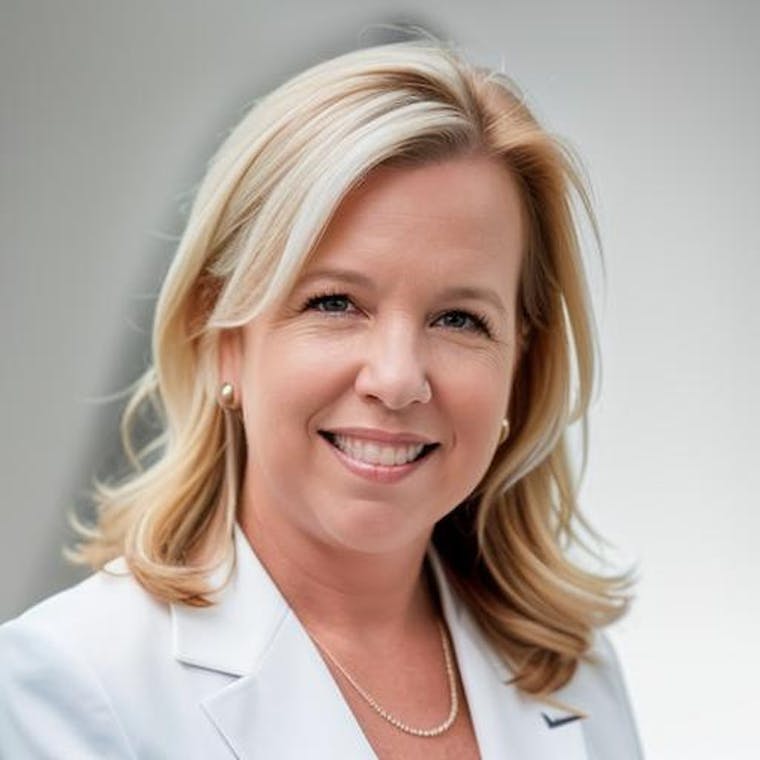Teaching, Learning, and Everything in Between: The Real Work of Continuing Professional Development
by Dr. Christi Doherty DNP, RNC-OB, CNE, CHSE, CDP, Executive Director, Nursing & i-Human Patients | October 24, 2025

If there’s one truth that never changes in nursing, it’s that our learning never ends. From our first clinical rotation to our most recent course on digital health tools, the journey of a nurse, and especially a nurse educator, is one of constant growth.
Continuing Professional Development (CPD) is more than a checkbox for license renewal. It’s a commitment to keeping our knowledge sharp, our teaching relevant, and our passion for the profession alive. But for many educators, CPDs can feel like one more task on an already full plate. Between teaching, mentoring, grading, and adapting to new technologies, finding time for your own learning can seem impossible. Yet, it’s this very commitment to growth that sustains our competence, confidence, and joy in the profession.
The Evolving Role of the Nurse Educator
The work of nurse educators has changed dramatically in recent years. We’re not just teaching content; we’re shaping future nurses who will enter complex, technology-driven, and globally connected healthcare systems. The rapid shift to online and hybrid learning during the pandemic reminded us how quickly our teaching environments can change, and how essential flexibility, adaptability, and digital fluency have become (King et al., 2021).
Today’s nurse educator must stay clinically current, aligning teaching with evidence-based practice and emerging health issues. We need to be pedagogically skilled, capable of teaching effectively in virtual, hybrid, and simulation-based environments that mirror the realities of modern healthcare. Digital literacy is no longer optional; it’s foundational to engaging learners and leveraging evolving technologies. At the same time, nurse educators are increasingly called to be research-minded and to question, innovate, and contribute to the continuous improvement of education (Smith et al., 2023). And through it all, we must lead and collaborate, guiding both students and colleagues through the constant change that defines our profession.
That’s a tall order, and it can’t be achieved through experience alone. It requires intentional, ongoing professional development and a commitment to continually growing alongside the field we serve.
The Benefits Go Beyond Competence
Professional development is often discussed in terms of maintaining competence, but the benefits run much deeper. Engaging in meaningful CPD strengthens our sense of purpose and professional identity. It promotes well-being, boosts confidence, and reignites the curiosity that drew us to nursing in the first place. Research consistently shows that continuous learning is linked to greater job satisfaction and motivation. When we feel competent and current, we also feel more engaged and effective in our roles.
The Challenge of Time and Energy
Of course, the greatest challenge most nurse educators face isn’t motivation, it’s time. Between heavy teaching loads, administrative responsibilities, student advising, and sometimes even maintaining a clinical practice, the idea of adding professional development into the mix can feel daunting.
Many educators report that while they value CPD, their workload, stress, and lack of institutional support often make it difficult to engage in it meaningfully (Mlambo et al., 2021). Professional growth can easily slip to the bottom of the to-do list, saved for “when things slow down;” a time that never seems to arrive.
This is where organizations and leaders play a critical role. When employers provide resources, protected time, and genuine encouragement for continuing development, it sends a message that learning isn’t an afterthought; it’s a priority. Institutions that invest in their educators’ growth build stronger, more resilient programs and, ultimately, better-prepared graduates.
At the individual level, reframing CPD as an act of self-care rather than an obligation can make a difference. Professional development isn’t separate from your work; it’s what sustains it.
Real and Relevant CPDs
For CPD to be truly valuable, it must connect with the realities of our daily practice. The most meaningful learning experiences are those that solve problems we face in the classroom, in simulation labs, or in the broader context of nursing education. They’re the ones that make us think differently about how we teach, how we lead, and how we support students.
When choosing professional development opportunities, look for experiences that align with your professional goals and your passions. Engage in learning that sparks curiosity and offers immediate, practical value. The goal is not just to earn hours, but to grow in ways that enrich both your teaching and your sense of purpose.
Lifelong Learning as Professional Identity
Ultimately, continuing professional development is more than a professional requirement; it’s part of who we are as nurses and educators. Lifelong learning is at the heart of nursing’s professional identity. It’s what keeps us adaptable in the face of change and connected to the values that define our work. When we model curiosity, reflection, and growth, our students notice. They learn from how we continue to learn. Each time we engage in CPD, we’re not only strengthening our own practice, but we’re also setting an example for the next generation of nurses, showing them that excellence in care begins with a commitment to keep learning.
So, the next time you plan your CE hours or explore new professional opportunities, don’t just ask, “What do I need to renew my license?” Instead, ask, “What will renew my passion for teaching and nursing?”
Because when educators grow, the entire nursing profession grows with them.
References
- King, R., Taylor, B., Talpur, A., Jackson, C., Manley, K., Ashby, N., Tod, A., Ryan, T., Wood, E., Senek, M., & Robertson, S. (2021). Factors that optimize the impact of continuing professional development in nursing: A rapid evidence review. Nurse Education Today, 98. https://doi.org/10.1016/j.nedt.2020.104652
- Mlambo, M., Silen, C., & McGrath, C. (2021). Lifelong learning and nurses’ continuing professional development, a metasynthesis of the literature. BMC Nursing, 20(62). https://doi.org/10.1186/s12912-021-00579-2
- Smith, J., Kean, S., Vauhkonen, A., Elonen, I., Silva, S. C., Pajari, J., Cassar, M., Martin-Delgado, L., Zrubcova, D., & Salminen, L. (2023). An integrative review of the continuing professional development needs for nurse educators. Nurse Education Today, 121. https://doi.org/10.1016/j.nedt.2022.105695

Dr. Christi Doherty is the Executive Director of Nursing & i-Human Patients at Kaplan North America. Dr. Doherty is a skilled researcher, valued professor of nursing, experienced clinical nurse, and designer of virtual simulations. She has earned certifications in nursing education, healthcare simulation education, diversity, and inpatient obstetrics. Dr. Doherty has published several books and journal articles and presented nationally and internationally on diverse subjects such as clinical judgment, mentorship, simulation, and students' engagement in statistics and informatics.
